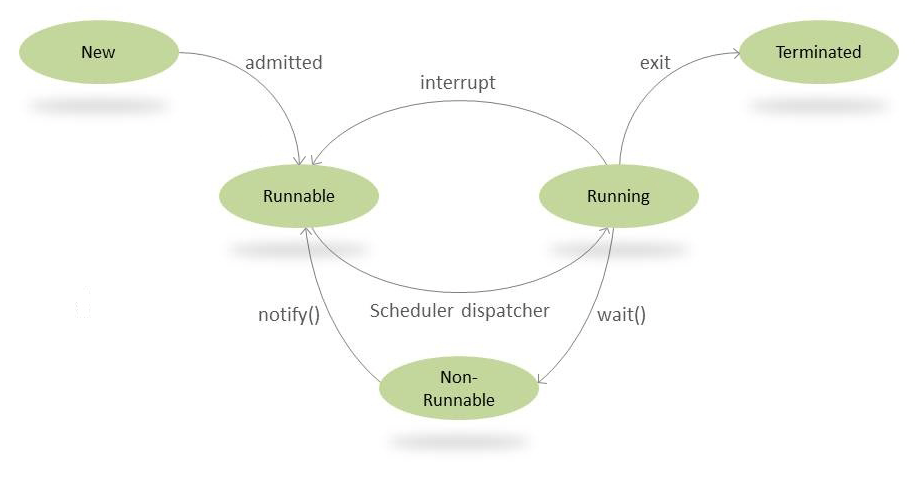[OS] Process Sync - Java Synchronization
29 Apr 2020
When one application access with multiple thread concurrently, and data consistency is preserved, we call this Thread Safe
Busy Waiting
We described busy waiting in semaphore section:
Major drawback of above approach is that every process needs busy waiting That is, if one process is in their critical section, all other process have to run its entry section over and over again. Busy waiting wastes CPU time of waiting processes.
To solve this, process waiting queue is one option. In Java, Thread.yield() will do this. But, consider this scenario: (Note that JVM prefers high priority process than low priority process in scheduling)
- Producer has high priority than Consumer
- Buffer is full
- Producer yield() (or busy wait) until count < BUFFER_SIZE
As consumer has low priority than producer, Consumer will never be scheduled with JVM.
This situation called Livelock
Race Condition
We described race condition in background section:
Condition that multiple process manipulating to same data and result of the operation depends on the sequence of executing each commands is called “Race Condition”
In Java, we use synchronized keyword for this. Before we go, note that
- Every object in java is related to one lock
- Object’s Lock owned by one Thread
When one method defined with synchronized and called, it requires lock of this object. If Thread A calls synchronized method and another thread B owns object O’s lock, thread A is blocked and put in entry set for object O. When thread ends method, object O’s lock is released. When lock is released, JVM chooses random(?) thread of object O’s entry set.
// Entry set insert / lock implementation
public synchronized void insert(Object item) {
while (count == BUFFER_SIZE) {
Thread.yield();
}
++count;
buffer[in] = item;
in = (in + 1) % BUFFER_SIZE;
}
public synchronized Object remove() {
Object = item;
while (count == 0) {
Thread.yield();
}
--count;
item = buffer[out];
out = (out + 1) % BUFFER_SIZE;
return item;
}
Synchronizing code block is also allowed:
Object mutexLock = new Object();
...
public void someMethod() {
nonCriticalSection();
synchronized(mutexLock) {
criticalSection();
}
remainderSection();
}
Deadlock
- Consider that buffer is full, and consumer is in sleep status
- If producer calls insert() (as lock is usable) producer is allowed to proceed
- when producer calls insert(), as buffer is full, producer calls yield()
- Though, producer still has lock
- When consumer awaken and try to call remove(), as producer has lock, consumer cannot call remove(), so buffer remained full.
This is one example how yield() makes deadlock
Wait and Notify

Each Object in Java has “wait set”, “entry set” of threads.
When Thread goes to synchronized method, thread has object’s lock.
If Thread cannot proceed (like buffer is full, and producer cannot produce), thread releases its lock and goes to its “wait set”, to prevent deadlock.
when wait() called
- Thread releases monitor’s lock (which called by synchronized)
- Thread status goes to “blocked”
- Thread goes to object’s wait set
when notify() called
- choose arbitrary Thread T from wait set
- move T from wait set to entry set
- change T’s status from blocked to runnable